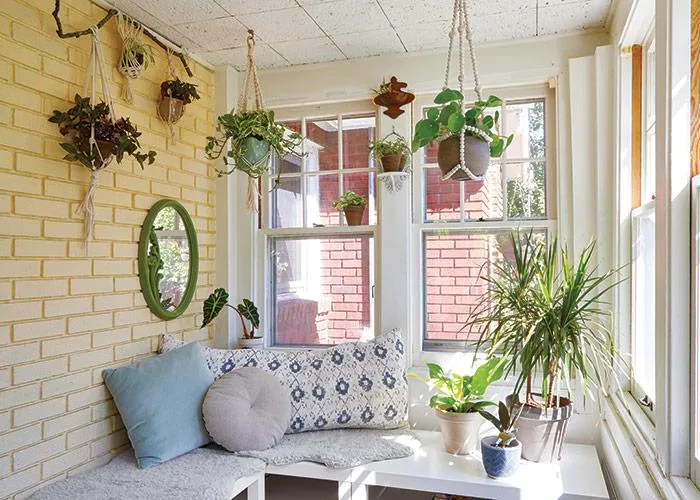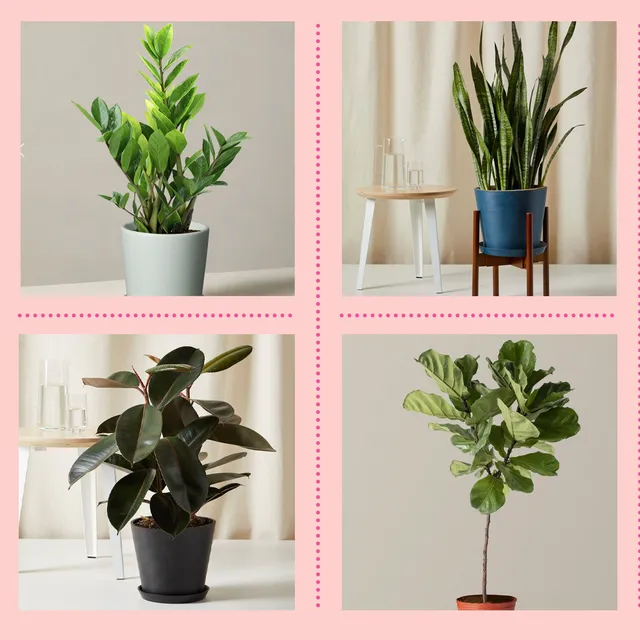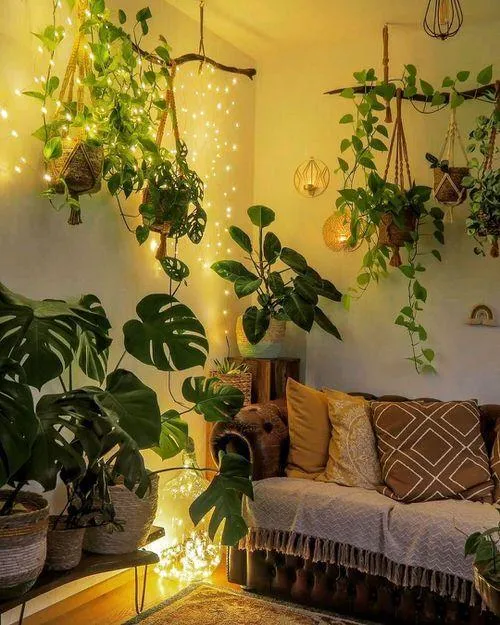Everything You Need to Know About Hanging Plants in Your Apartment
If you live in an apartment and want to add some greenery to brighten up your space, hanging plants are a great option. In this article, I’ll cover all the basics of selecting, caring for, and displaying hanging plants indoors so you can turn your apartment into an urban oasis.
Choosing the Right Hanging Plants
When selecting hanging plants for your apartment, there are a few things to consider:
- Light conditions – Most apartments don’t get as much natural light as houses. Look for plants that do well in low to medium light, such as pothos, philodendron, spider plants, or english ivy.
- Watering needs – Hanging baskets dry out quickly so choose plants that don’t need frequent watering, like succulents or peperomias. Avoid plants that need consistently moist soil.
- Size – Make sure to factor in the mature size so your plant doesn’t outgrow its space. Trailing vines like philodendron or pothos tend to work well.
- Appearance – Pick plants with an aesthetic that matches your style. Consider foliage texture, shape, and color palette.
Popular Hanging Plant Options
Here are some top plant picks for hanging baskets in apartments:

- Pothos – Hard to kill and tolerant of low light, pothos comes in various leaf patterns like golden, marble queen, and neon. Trails nicely.
- Spider Plant – Produces spider-like baby plants on long stems. Very low maintenance and great at filtering indoor air.
- Philodendron – Heart-shaped foliage in shades of green. Vining philodendron varieties like brasil and micans add wow-factor.
- English Ivy – Evergreen vine with small dark green leaves. Thrives in low light and trails attractively.
- Ferns – Ethereal textures of Boston, ribbon, or button fern make a statement. Water carefully as prone to rot.
- Succulents</ – Choose trailing varieties of echeveria, senecio, sedum to withstand occasional dry soil. Low fuss!
Tips for Caring for Hanging Plants
Proper care is essential for keeping your hanging plants healthy:
- Water when the top inch of soil is dry. Use a moisture meter to check soil moisture if unsure.
- Mist foliage weekly to increase humidity around plants and prevent powdery mildew or scale insects.
- Rotate the pot every few weeks so all sides get even light exposure.
- Prune off any dead or diseased foliage regularly to encourage new growth.
- Fertilize monthly in the growing season with a diluted, water-soluble plant food.
- Repot when roots emerge from the drainage holes for better drainage and room to grow.
Displaying Hanging Plants Stylishly
From my experience living in apartments, here are some tips for showing off your hanging plants:
- Use macrame hangers, chains, or cables of varying lengths for an arranged, layered look.
- Place trailing plants in hanging baskets, wooden boxes, or rattan cages for visual appeal.
- Coordinate pot colors or styles for a coordinated arrangement.
- Hang plants individually or in groups from ceiling hooks or rods for impact.
- Hang pots from curtain rods, shelves, or door frames for unusual vining spectacles.
- Cluster potted vines winding down bookshelves, cabinets or walls for a lush greenery wall.
With the right plants and care, you can turn even a cramped apartment into a verdant indoor sanctuary. Make adjustments along the way as different varieties thrive or struggle. Most of all, enjoy your leafy hanging friends!

Choosing Hanging Plants for your Apartment
| Plant | Light Needs | Water Needs | Size |
|---|---|---|---|
| Pothos | Low | Allow soil to dry between waterings | Trailing vines up to 6 feet |
| Philodendron | Low to medium | Water when top inch of soil is dry | Can grow up to 8 feet tall |
| Spider plant | Medium | Allow soil to dry slightly between waterings | Trailing vines up to 3 feet |
| English ivy | Low to medium | Water when top inch of soil is dry | Vigorous climber, can reach 25 feet |
| Peperomia | Medium | Water when top inch of soil is dry | Tolerates low light, compact growth |
FAQ
-
How many hanging plants can I have in my apartment?
Most people can have several hanging plants depending on how much sunlight their apartment gets. You’ll essentially want to pick hanging plants that need the amount of light you can provide. Generally, you can have like 5-10 medium sized hanging plants if you get good natural light. At the same time, if you have many hanging shelves or wall space, you could easily get away with dozens of smaller plants. The main thing is choosing plants that will thrive in your light conditions.
-
What type of hanging plants do best in apartments?
Some of the best types of hanging plants for apartments include pothos, spider plants, philodendrons, English ivy and succulents. These plants basically don’t require too much sunlight to survive. Pothos and philodendrons can even live with just artificial lighting from a nearby window. Succulents are also pretty rad since they store water, so you don’t have to water them as often as other plants. Ferns are stunning hanging plants but they need more natural light to stay happy.
-
How do I care for hanging plants?
To care for hanging plants, water them whenever the soil seems dry. You can check by sticking your finger in the dirt. Make sure the drainage holes in the planter aren’t blocked so excess water can escape. Occasionally spray the leaves to increase humidity. You’ll also want to rotate the pots every month or so if they don’t get evenly distributed light. Finally, fertilize during the growing seasons in spring and summer. Proper care will keep your hanging buddies looking lush!

-
What’s the best way to mount hanging plants?
The most secure way to hang plants is by using hook-and-loop tape, sometimes called Command Strips. These removable adhesive hooks can hold several pounds and won’t damage walls or ceilings like nails might. You put the hook half on the surface and loop half on the planter. Another pretty rad option is hanging brackets that screw directly into wall studs for maximum security. Macramé plant hangers may seem to require knot-tying skills, but they actually kind of easy and add nice boho flair. Just be conscious of the weight the surface can handle.
-
Will hanging plants attract bugs?
Hanging plants may bring in bugs on occasion, but it’s not a huge issue if you choose the right plants. Pests to watch for are mostly gnats and spider mites. To reduce bugs, only water when soil is dry and remove any decaying leaves or stems. You could also try placing sticky traps nearby. My neighbor Susie swears by neem oil spritzes as a natural preventative. If you do encounter bugs, a non-toxic insecticide soap should get rid of them. Overall, with basic care most hanging plants pose little risk of major infestations.
-
How often should I water hanging baskets?
The frequency of watering hanging baskets depends a lot on the type of plant and weather. As a general guide, water whenever the top inch or two of soil becomes dry. In warmer months like summer, you may need to water every 5 days or so. While spring and fall could be every 7-10 days. In the winter when plants aren’t actively growing, every 2+ weeks is often sufficient. Stick your finger in the dirt to check moisture levels if you’re uncertain. Overwatering hanging plants is easy to do, so erring on the side of letting it dry out slightly is a safer approach.

-
What are some alternatives to real plants for apartments?
If real plants aren’t your thing, faux plants or dried arrangements make pretty convincing alternatives. Most people cannot tell the difference between high quality artificial and live foliage. Another cool substitution is an air plant display. These need just occasional misting, not soil. Decorating with plant prints on walls, tapestries or dishes is a vivid way to bring greenery into your space without commitment. Hanging dried lavender, eucalyptus or grasses adds soothing fragrance too. Finally, succulent stones and potted moss balls require minimal care.
